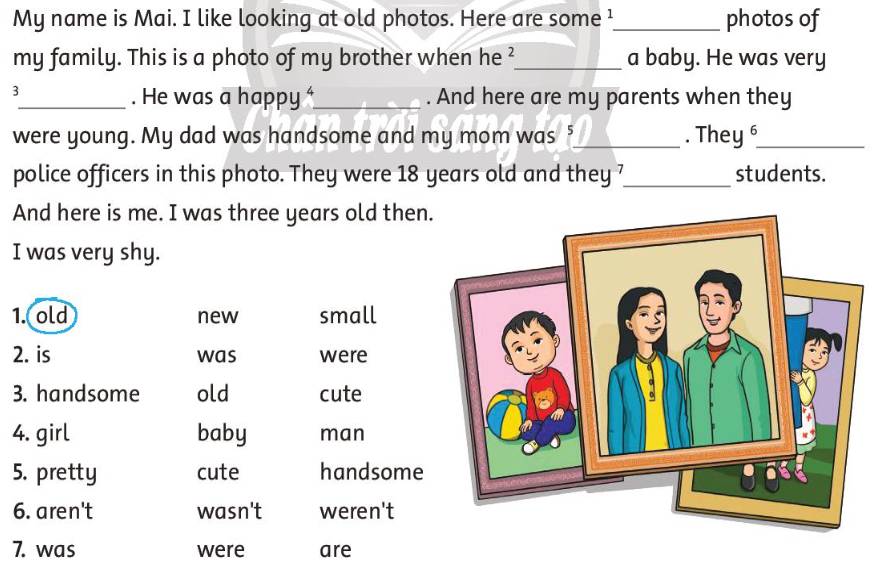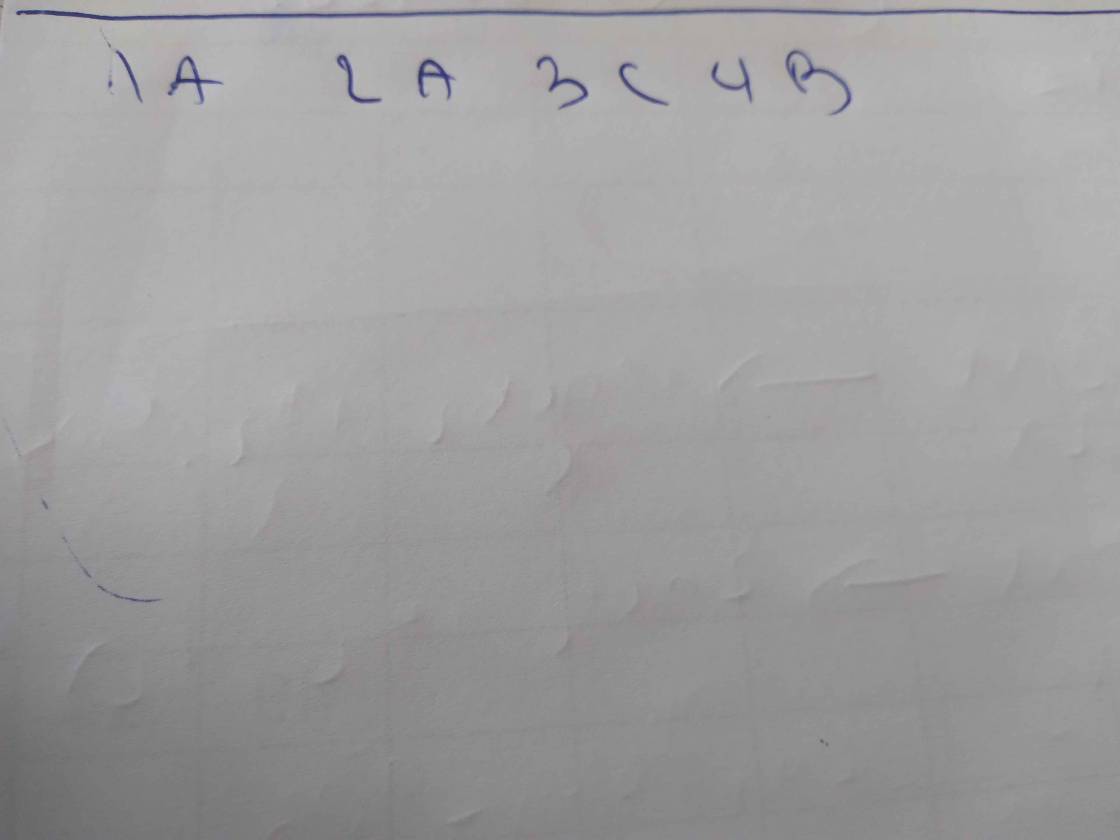look and circle the words
Hãy nhập câu hỏi của bạn vào đây, nếu là tài khoản VIP, bạn sẽ được ưu tiên trả lời.


1. charity = a group that helps people or animals: tổ chức từ thiện
2. protect = keep safe: bảo vệ
3. free = no money: miễn phí
4. wildlife = animals and plants: động thực vật hoang dã
5. donate = give money to help someone or something: quyên góp

* Câu hỏi 1 bài tập 4
1 Ann Sullutor
a is an invention of the 22nd century.
b costs a huge sum of money.
c takes a 20-hour energy charge.
d can't be controlled orally.
Thông tin: “Ann Sullutor is the brainchild of a 22nd century scientist”
(Ann Sullutor là sản phẩm trí tuệ của một nhà khoa học thế kỷ 22.)
Chọn A
Từ được dùng trong câu thay cho từ phương án đúng là: “brainchild” (sản phẩm trí tuệ) thay thế cho “invention” (sự phát minh)

1. We use and to join similarindependent clauses in a compound sentence.
(Chúng ta sử dụng “và” để kết hợp các mệnh đề độc lập tương tự nhau trong câu ghép.)
2. We use but to join opposite independent clauses in a compound sentence.
(Chúng ta sử dụng “nhưng” để kết hợp các mệnh đề độc lập trái ngược nhau trong câu ghép.)
3. Hội An Town is an old town, and it’s got a population of about 152,160.
(Hội An là một thị trấn cổ, dân số khoảng 152.160 người.)
4. Mr Nam sometimes stays in Hà Nội, but he lives in Hồ Chí Minh City.
(Ông Nam thỉnh thoảng ở Hà Nội, nhưng ông sống ở Thành phố Hồ Chí Minh.)

1. old | 2. was | 3. handsome | 4. baby | 5. pretty | 6. weren’t | 7. were |
Đoạn văn hoàn chỉnh:
My name is Mai. I like looking at old photos. Here are some old photos of my family. This is a photo of my brother when he was a baby. He was very handsome. He was a happy baby. And here are my parents when they were young. My dad was handsome and my mom was pretty. They weren't police officers in this photo. They were 18 years old and were students. And here is me. I was three years old here.
I was very shy.
Tạm dịch:
Tên tôi là Mai. Tôi thích ngắm nhìn những bức ảnh cũ. Dưới đây là một số tấm ảnh cũ của gia đình tôi. Đây là bức ảnh của anh trai tôi khi anh ấy còn là một em bé. Anh ấy rất điển trai. Anh ấy là một em bé rất vui vẻ. Và đây là bố mẹ tôi khi họ còn trẻ. Bố tôi đẹp trai còn mẹ tôi thì rất xinh đẹp. Họ òn chưa là cảnh sát trong bức ảnh này. Họ mới chỉ 18 tuổi và họ còn là sinh viên. Còn đây là tôi. Lúc này tôi đã 3 tuổi rồi.
Tôi đã rất ngại.

D. Circle the correct words.
3. The goldfish has gills, They help them/it breathe.
4. I am dancing. Look at you/ me
5. We can't bake a pie. Please teach us/you
6. We're friends. You me, and I me/you

1 - A | 2 - A | 3 - C | 4 - B |
1 - A. appreciate: to recognise the good qualities of something
(đánh giá cao: để công nhận những phẩm chất tốt của một cái gì đó)
2 - A. trending: being discussed a lot on social media
(phổ biến: đang được thảo luận rất nhiều trên mạng xã hội)
3 - C. give voice to: to express opinions about something
(lên tiếng: bày tỏ ý kiến về điều gì đó)
4 - B. proposed: suggested something as a plan or course of action
(đề xuất: đề xuất một cái gì đó như một kế hoạch hoặc quá trình hành động)

/u/ : books, football, puddings, sugar, wolf
/u:/ : pool, pool, drew, soup, cartoon
Lưu ý: Từ có chứa âm /ʊ/ được gạch dưới, từ có chứa âm /u:/ được tô nền màu vàng nổi bật.
1. She likes reading books and swimming in the pool.
book /bʊk/
pool /puːl/
2. When it is cool, we like to play football.
cool /kuːl/
football /ˈfʊtbɔːl/
3. She drew and made puddings in her free time.
drew /druː/
pudding /ˈpʊdɪŋ/
4. My mum loves pumpkin soup and coffee with a little sugar.
soup /suːp/
sugar /ˈʃʊɡə(r)/
5. My brother is fond of watching the cartoon about a clever wolf.
cartoon /kɑːˈtuːn/
wolf /wʊlf/


Dịch :
-Nhìn và khoanh tròn các từ sau :
# Hok tốt !
dịch:nhìn và khoanh tròn các từ sau